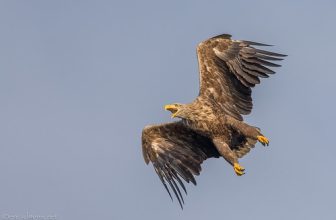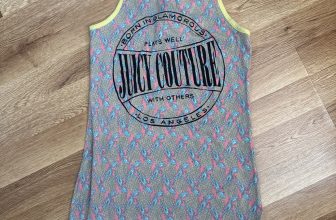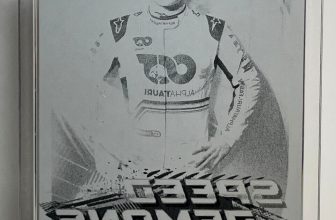

Mae Carol Jemison, M.D. (born 17 October 1956) is an American physician and a former NASA astronaut. She became the first Black woman to travel in space when she went into orbit aboard the Space Shuttle Endeavour on September 12, 1992.
Mae Carol Jemison was born on October 17, 1956 in Decatur, Alabama, the youngest child of Charlie Jemison, a maintenance supervisor for a charity organization, and Dorothy (Green) Jemison, an elementary school teacher of English and math The family moved to Chicago, Illinois, when Jemison was 3 to take advantage of better educational opportunities there. Jemison says that as a young girl growing up in Chicago she always assumed she would get into space "I thought, by now, we’d be going into space like you were going to work She said it was easier to apply to be a shuttle astronaut, "rather than waiting around in a cornfield, waiting for ET to pick me up or something.
As a child growing up, Jemison learned to make connections to the world by studying nature "It sounds a little gross, but I was fascinated with pus," Jemison said. Once when a splinter infected her thumb as a little girl, Jemison’s mother turned it into a learning experience "I ran and showed it to my mother and she was telling me it was pus. I was like, ‘’Well, what is that?’ And I ended up doing this whole project, reading about pus. My mother always told me to go find out the information myself. She was very directive, in the sense of ‘’it’s your responsibility,’ sort of like those people who tell you to go look up a word in the dictionary when you don’t know how to spell it."[3] Jemison wouldn’t let anyone dissaude her from pursuing a career in science "In kindergarten, my teacher asked me what I wanted to be when I grew up, and I told her a scientist," Jemison says. "She said, ‘Don’t you mean a nurse?’ Now, there’s nothing wrong with being a nurse, but that’s not what I wanted to be."
Jemison loved science growing up but she also loved the arts.[5] Jemison began dancing at the age of 9. "I love dancing! I took all kinds of dance — African dancing, ballet, jazz, modern — even Japanese dancing. I wanted to become a professional dancer," said Jemison During high school she auditioned for the leading role of "Maria" in West Side Story. She didn’t get the part but Jemison’s dancing skills did get her into the line up as a background dancer. "I had a problem with the singing but I danced and acted pretty well enough for them to choose me. I think that people sometimes limit themselves and so rob themselves of the opportunity to realise their dreams. For me, I love the sciences and I also love the arts," says Jemison. "I saw the theatre as an outlet for this passion and so I decided to pursue this dream." Later during her senior year in college, she was trying to decide whether to go to New York to medical school or become a professional dancer. Her mother told her, "You can always dance if you’re a doctor, but you can’t doctor if you’re a dancer."
Jemsion graduated from Chicago’s Morgan Park High School in 1973 and entered Stanford University at age 16. "I was naive and stubborn enough that it didn’t faze me," Jemsion said . "It’s not until recently that I realized that 16 was particularly young or that there were even any issues associated with my parents having enough confidence in me to [allow me to] go that far away from home." Jemison graduated from Stanford in 1977, receiving a B.S. in chemical engineering and fulfilling the requirements for a B.A. in African and Afro-American Studies . Jemison said that majoring in engineering as a black woman was difficult because race is always an issue in the United States. "Some professors would just pretend I wasn’t there. I would ask a question and a professor would act as if it was just so dumb, the dumbest question he had ever heard. Then, when a white guy would ask the same question, the professor would say, "That’s a very astute observation.’"
Jemison obtained her Doctor of Medicine degree in 1981 from Cornell Medical College (now Weill Medical College of Cornell University). She interned at Los Angeles County-USC Medical Center and later worked as a general practitioner.During medical school Jemison traveled to Cuba, Kenya and Thailand, to provide primary medical care to people living there. During her years at Cornell Medical College, Jemison took lessons in modern dance at the Alvin Ailey school Jemison later built a dance studio in her home and has choreographed and produced several shows of modern jazz and African dance.
After completing her medical internship, Jemison joined the staff of the Peace Corps and served as a Peace Corps Medical Officer from 1983 to 1985 responsible for the health of Peace Corps Volunteers serving in Liberia and Sierra Leone. Jemison’s work in the Peace Corps included supervising the pharmacy, laboratory, medical staff as well as providing medical care, writing self-care manuals, and developing and implementing guidelines for health and safety issues. Jemison also worked with the Center for Disease Control (CDC) helping with research for various vaccines .
Once while serving as a Doctor for the Peace Corps, a volunteer got sick and another doctor diagnosed malaria. The volunteer got progressively worse and Jemison was sure it was meningitis with life-threatening complications that could not be treated in Sierra Leone. Jemison called for an Air Force hospital plane based in Germany for a military medical evacuation at a cost of $80,000. The embassy questioned whether Jemison had the authority to give such an order but she told them she didn’t need anyone’s permission for a medical decision. By the time the plane reached Germany with Jemison and the volunteer on board, she had been up with the patient for 56 hours. The volunteer survived.
While working in the Peace Corps in Sierra Leone, Jemison found a feline companion who would share her life for the next 15 years – a cat named "Sneeze and Fleas." "He was white with touches of silver and gray, and used to sit at the table with me. When I first got him he was eating the local foods, which were spicy sauces and stews over rice," Jemison said. "When I started working on the space mission, he lived with my parents in Chicago and was the one thing I really couldn’t wait to return to. When I think of home and what it means to me, I always think of Sneeze."
Astronaut Dr. Mae C. Jemison was a mission specialist on board the STS-47 mission. Jemison is shown preparing to deploy the lower body negative pressure (LBNP) apparatus in this 35mm frame taken in the science module aboard the Earth-orbiting Space Shuttle Endeavor.
Astronaut Dr. Mae C. Jemison was a mission specialist on board the STS-47 mission. Jemison is shown preparing to deploy the lower body negative pressure (LBNP) apparatus in this 35mm frame taken in the science module aboard the Earth-orbiting Space Shuttle Endeavor.
In 1985 Jemison returned to the United States, entered private practice in Los Angeles as a general practicioner with CIGNA Health Plans of California and began taking graduate engineering courses. After the flight of Sally Ride in 1983, Jemison felt the astronaut program had opened up enough for her to apply Jemison’s inspiration for joining NASA was African-American actress Nichelle Nichols, who portrayed Commander Uhura on Star Trek. Jemsion was turned down on her first application to NASA, but in 1987 Jemison was accepted on her second application and became one of the fifteen candidates accepted from over 2,000 applicants. "I got a call saying are you still interested and I said ‘yea’," says Jemison.
Her work with NASA before her shuttle launch included launch support activities at the Kennedy Space Center in Florida and verification of Shuttle computer software in the Shuttle Avionics Integration Laboratory (SAIL) ] "My task while I was with NASA was not to immediately start training for space flight, because it takes a while before you are assigned to a mission, but I did things like help to support the launch of vehicles at Kennedy Space Center," said Jemison "I was in the first class of astronauts selected after the Challenger accident back in 1986, and the very first assignment I had was working at Kennedy Space Center. I saw the launch and in fact actually worked the launch of the first flight after the Challenger accident. I worked at the shuttle avionics integration laboratory, which is where all the software that flies the space shuttle is tested."
Dr. Jemison flew her only space shuttle mission from September 12 to 20, 1992 as a mission specialist on STS-47.[8] "The first thing I saw from space was Chicago, my hometown," said Jemison. was working on the middeck where there aren’t many windows, and as we passed over Chicago the commander called me up to the flight deck. It was such a significant moment because since I was a little girl I had always assumed I would go into space," Jemison added. "When I grew up, in the 1960’s, the only American astronauts were men. Looking out the window of that space shuttle, I thought if that little girl growing up in Chicago could see her older self now, she would have a huge grin on her face."
Because of her love of dance and as a salute to creativity, Jemison took a poster from the Alvin Ailey American Dance Company along with her on the flight. "Many people do not see a connection between science and dance," says Jemison. "but I consider them both to be expressions of the boundless creativity that people have to share with one another. Jemison also took several small art objects from West African countries to symbolize that space belongs to all nations
STS-47 was a cooperative mission between the United States and Japan that included 44 Japanese and United States life science and materials processing experiments. The international crew was divided into red and blue teams for around the |clock operations. Jemison was the co-investigator for the bone cell research experiment that investigated how space flight causes changes in bone cell function to better understand why bones become weaker during space flight. Dr. Jemison logged 190 hours, 30 minutes, 23 seconds in space.
Jemison resigned from NASA in March 1993 "I left NASA because I’m very interested in how social sciences interact with technologies," says Jemison. "People always think of technology as something having silicon in it. But a pencil is technology. Any language is technology. Technology is a tool we use to accomplish a particular task and when one talks about appropriate technology in developing countries, appropriate may mean anything from fire to solar electricity." Although Jemison’s departure from NASA was amicable, NASA was not thrilled to see her leave. "NASA had spent a lot of money training her; she also filled a niche, obviously, being a woman of color," says Hiram Hickam, a training manager for NASA’s space station efforts
Posted by eqadams63 on 2006-05-04 07:25:09
Tagged: , blackhistory , blackastronaut , nasa , spaceflight






